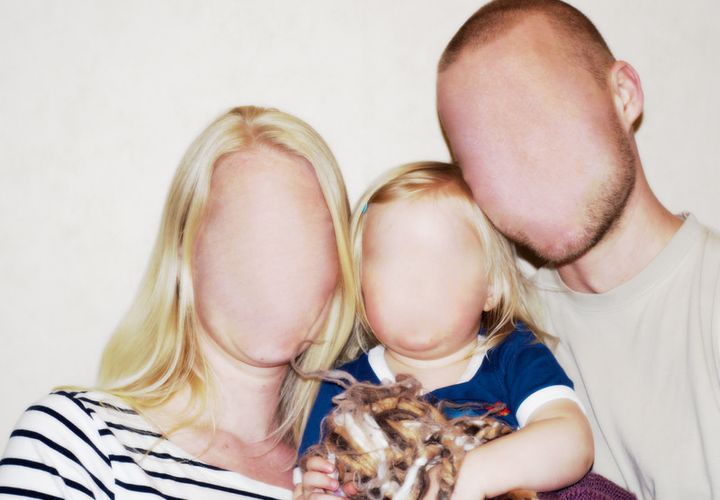
It’s odd to think that someone couldn’t recognize his own child, but not as odd as being the parent who looks into a sea of school children, and frightfully wonders if his is lost.
Imagine not being able to recognize your daughter when you pick her up from school.
Imagine teaching a class to the same students all week, but not recognizing them when you pass one in the hallway.
Imagine watching a movie where lead characters are played by new actors in every scene.
While it’s certainly not uncommon to forget someone’s face, the inability to recognize a face is called face blindness, or prosopagnosia (pràs-ō-pag-nōz-ya). It effects an estimated 2.5% of the population. Face recognition is built into a specific part of our brain called the fusiform. It lies in the temporal lobe in the back of the brain, and helps us differentiate people we know from those we don’t. In evolutionary terms, it would help us identify members of our own tribes and threats from another. But it doesn’t work for everyone.
I can’t say there was a specific time I realized I couldn’t recognize faces. As a kid, my exposure to people was limited to my own neighborhood and church. Repetition of faces helps with recognition. The more I see the same people, the more their faces imprint into my memory. There are some people with face blindness who don’t recognize faces at all, including their own. But we learn to cope in other ways.
A few years ago, my spouse and I were at a get-together. Someone we’d met two years earlier walked in. My spouse leaned over and asked, “Do you remember meeting this person?” I looked at the individual, and my mind drew a blank, until he spoke. Suddenly a flood of memories about where we met him, what we were doing, and whose house we were visiting came rushing back. I remembered where this person worked and even what he was wearing at the time.
I generally have a 20-minute attention span when I watch movies or television. It’s difficult to follow a storyline when actors, mostly women, change clothes or hairstyles. My brain tells me this is a new character, but I can’t figure out where she came from, or why she seems inappropriately intimate with the male lead when, as far as I know, she’s never met him before. On the rare occasion I go to the movies I have to ask the person I’m with who the characters are and where we’ve seen them before.
It’s odd to think that someone couldn’t recognize his own child, but not as odd as being the parent who looks into a sea of school children, and frightfully wonders if his is lost. I was aware my youngest had brown hair and blue eyes, but her facial features blurred with every other kid with brown hair and blue eyes. In order to find her, I’d watch how the kids moved their bodies when they walked, until I saw the one that looked familiar.
Prosopagnosia, it turns out, is congenital. My mother, sister, and daughter all have it. All of us, except for my single daughter, have found partners who are super recognizers. We’ve developed ways of communicating with them to tell us who people are when we don’t recognize them. Or, in my case, my spouse automatically briefs me as someone approaches us.
The condition often leaves me feeling vulnerable and exposed. Social gatherings are uncomfortable enough as an introvert, but to meet someone I should know, who appears to know me, is unnerving. It certainly doesn’t help when someone gets offended because I don’t recognize them, but it happens.
Ironically, as my spouse noted, I can identify most cars with a passing glance, and even tell what specific model they are. But that’s a different part of the brain. To remember faces, I look and listen for identifying characteristics: a large forehead, for example, or an unusual voice, a unique personality trait, or crooked teeth. Additionally, I am more likely to remember them in context. For example, if we met at a friend’s house and I see them there again - and I remember the sound of their voice - I will likely recall our conversation. If I see them while I’m walking my dog in my neighborhood, I would swear I’d never seen them before in my life.
There is no treatment or cure for prosopagnosia. The best way I’ve learned to deal with it is with a sense of humor. After several embarrassing moments of re-introducing myself to one of my daughter’s friends, I finally began greeting her by saying, “And you are…” It made both of us smile. And God help the poor soul, should I one day have to identify someone in a police line up.
